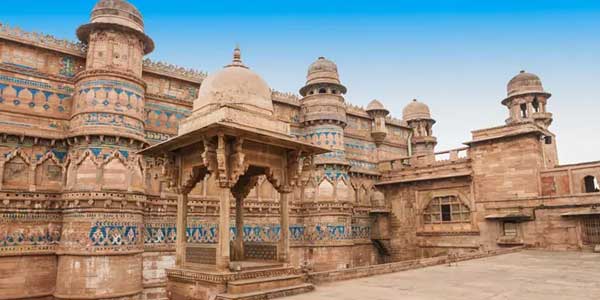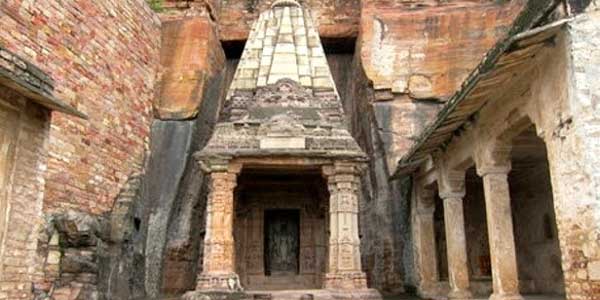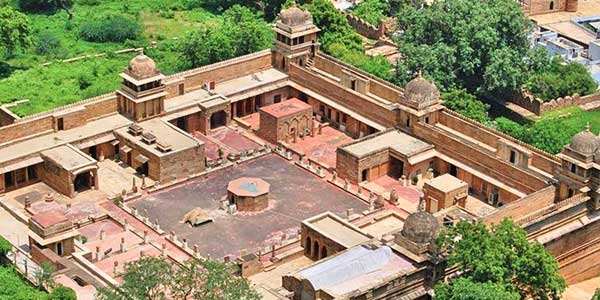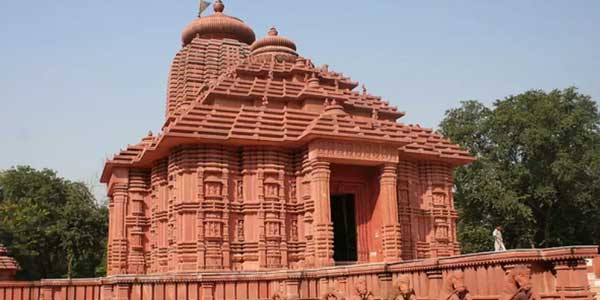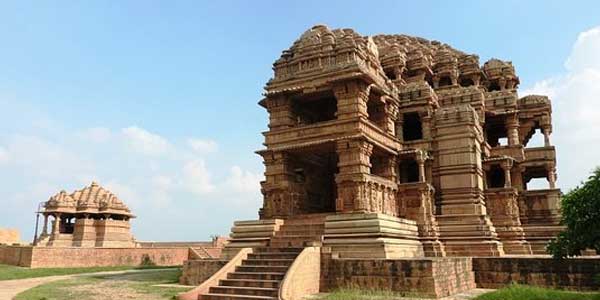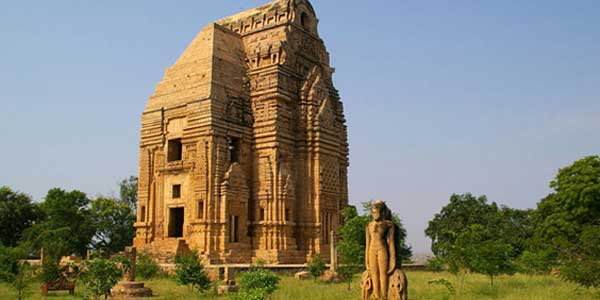
Jai Vilas Palace, Gwalior
Teli Ka Mandir is an ancient temple that is undoubtedly famous for its splendid architecture. Located in the Gwalior Fort complex, Teli Ka Mandir can be reached easily by taking local means of transport from Gwalior. The English version of Teli Ka Mandir is Oilman's Temple. Built in 11th century, Oilman's Temple is the oldest temple of the Gwalior Fort.
Elevating to the height of 100 feet, Teli Ka Mandir is the tallest and most stunning temple in the confines of the Gwalior Fort. The temple is actually dedicated to Lord Vishnu in the form of his mount, Garuda. The colossal image of 'Garuda' (Mount of Lord Vishnu) is the major attraction of Teli Ka Mandir. This unusual image makes the circlet of the doorway, the highest structure in the Gwalior Fort.
The term "Teli Ka Mandir"
"Teli Ka Mandir" sounds as an unusual term, but it has several theories behind its name. According to one of the legends, Rashtrakuta Govinda III seized the Gwalior Fort in 794. He handled the service of religious ceremonies and rituals to Telang Brahmins and as a result of this, the temple acquired its name. Another legend says that oil merchants or the men of Teli Caste took the initiative of temple's construction. Due to it, the temple got its name. The third speculation reveals that name is linked with Telangana region of Andhra Pradesh. This revelation also approves with the synthesis of Dravidian and North Indian architectural styles.
Architecture
What's there in the name? The matter of consideration is the architecture of this Rajput Temple. The structure of the temple presents a perfect fusion of the northern and southern architectural styles of India. The 'shikhar' (spire) of the temple is undeniably Dravidian in its style, whereas the ornamentation is done in the Nagara style (specific to North India). Unlike other temples, Oilman's Temple doesn't have any 'mandap' or pillared hall. The temple comprises a sanctum sanctorum accompanied by a porch and a doorway.
The porch and the doorway are imprinted with elaborate carvings. One can trace figures of amorous couples, coiled serpents, gods and goddesses on the doorway. The central position on the doorway is dominated by the figure of flying Garuda. The weird and wonderful arrangement of two architectural styles attracts countless visitors throughout the year. Teli Ka Mandir boasts about the heritage and rich culture of India.
Gwalior Monuments
Gwalior Monuments lies to the south of Agra, about 122 km. A historic town renowned for its ancient and magnificent forts and palaces, Gwalior is home to many tourist attractions worth visiting when on a tour of Madhya Pradesh to Gwalior. Gwalior's temples and museums are among the city's many tourist attractions.
Gwalior occupies an significant role in the medieval history and struggle for independence in India. The town is also renowned for being home to many of the country's respected colleges and schools. Rich in cultural heritage and architectural marvels, Gwalior was placed under the control of many dynasties of the Pratiharas, Kacchwahas and Tomars heroic Rajput clans. This city has preserved its rich cultural heritage, expressed marvelously in its palaces , temples and museums.
The Gwalior Monuments and Museums attract numerous visitors from every corner of the globe to Gwalior. Gwalior Monuments and Museums are not only buildings in stone and brick, but they are the living examples from which we can go back in time and discover India's past.
Gwalior India's Monuments in and Museums are outstanding examples of the glorious architectural heritage of the past. For decades, the remains of such buildings tended to fascinate art lovers and historians. The Monuments and Museums in Gwalior, worldwide revered for their architectural splendour, owe their execution to the imagination of great rulers of the past Those who dared to push their thoughts to the very limits of human thinking. From the pages of their history book each of these monuments narrates a distinctive tale. Gwalior museums houses a rich and varied array of ancient sculptures, artifacts, and buildings.
Built on steep sandstone ground, Gwalior Fort is the most exemplary among the Gwalior Monuments and Museums. Another famous monument inside the walls of the Fort is Gujari Mahal from the 15th century – designed as a symbol of Raja Mansingh Tomar 's love for his Gujar wife, Mrignayani. Constructed between 1486 and 1517 by Raja Mansingh, Mansingh Palace is yet another wonderful architectural splendor. The Jai Vilas Palace-current residence of the Scindia family-is also popular among the monuments and museums in Gwalior. Constructed to show a fine mix of Tuscan and Corinthian architectural styles, this palace is one of the city's main attractions.


